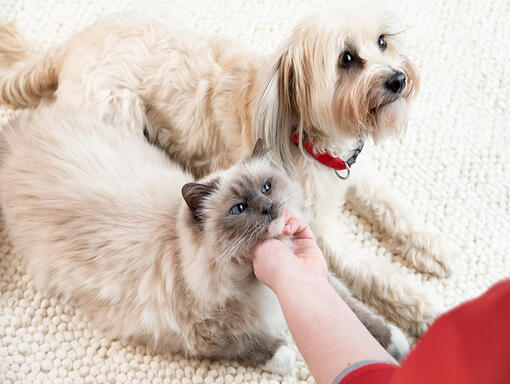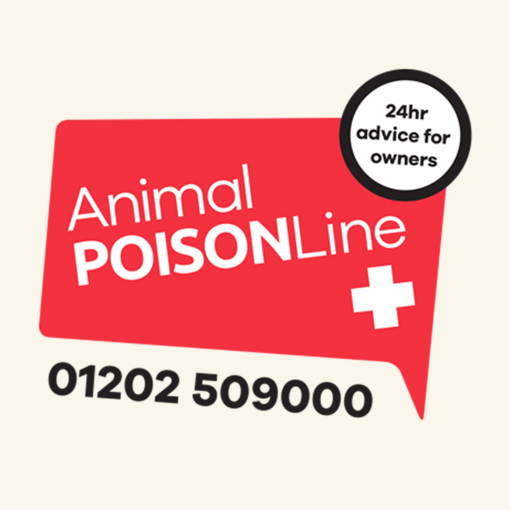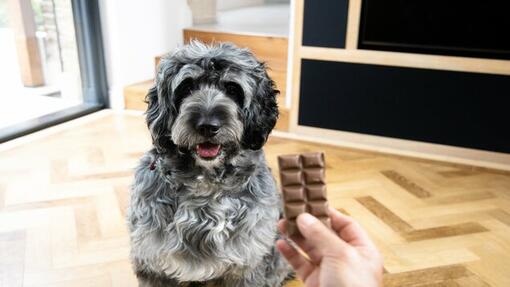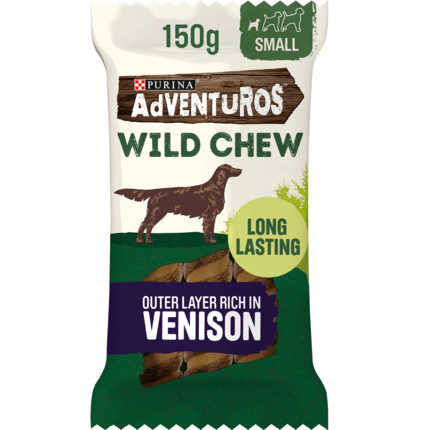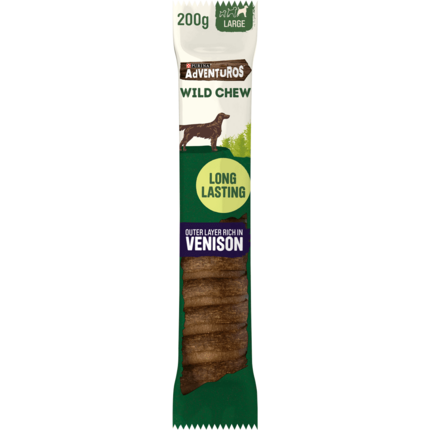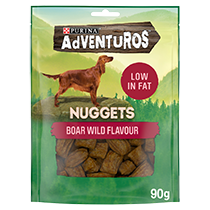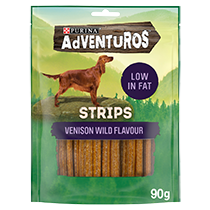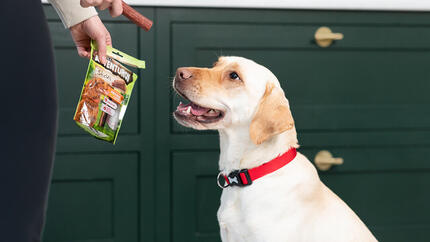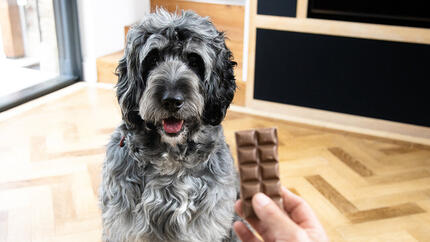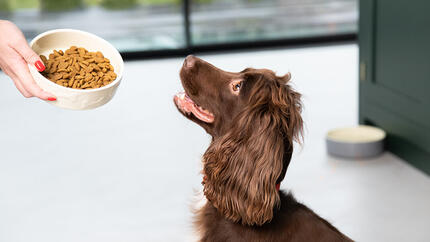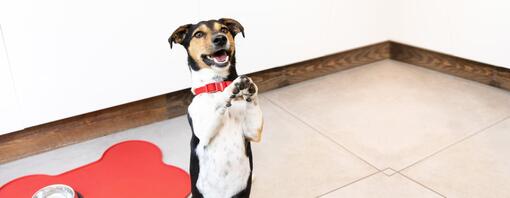
There are many common foods that dogs can’t eat, and very many non-food substances, including plants, which are potentially poisonous. Some of these you’ll know, while others might come as a surprise.
Many foods, medicines and plants which are safe for humans, can be toxic to our pets. In fact, some common household items that most people have lying around their homes can be life-threatening for dogs.
We’ve put together this comprehensive guide so you can learn about poisonous foods for dogs, which plants to avoid and what chemicals to always keep out of reach of your four-legged friend. Some of the items on this list may surprise you!
What foods can't dogs eat?
We all love to treat our pups to the occasional treat! While some human foods can be offered in moderation, others should be avoided entirely. When it comes to foods dogs can’t eat, many of the most common items in the fridge or cupboard are out of bounds for our pets, including grapes, onions and chocolate.
Although there are also many fruits and vegetables which are fine for dogs to eat in small quantities, these can pose a choking hazard if they're not cut into small pieces and fed under supervision.
Top toxic foods for dogs
The following foods should be avoided, and can be very toxic, even in small amounts:
Raisins and sultanas
Raisins are highly toxic to dogs and should be kept out of their reach. Some of the most common signs that might point to a toxic reaction are vomiting, diarrhoea and lethargy. It’s important to seek medical help immediately as raisins can lead to kidney failure when ingested by dogs, a condition which can be fatal.
Grapes
Grapes are toxic to dogs, so you should avoid offering them to your pet. If you suspect your dog helped themselves to a few grapes, let your vet know straight away so they can provide the vital support needed to get the fruit out of their system. Find out more with our article about dogs and grapes.
Onions
Onion poisoning can be fatal to dogs and they are often found in many human foods, so make sure you read the label before offering your pet a bite of your meal or snack. Find out more about why dogs can’t eat onions with our easy guide.
Garlic
Another toxic food to dogs is garlic. This is because it contains a substance that causes damage to the red blood cells when ingested by our canine friends. So, it’s important to avoid feeding it to your dog. If you suspect they helped themselves to food containing garlic, look out for signs of weakness, vomiting or panting and contact the vet straight away. We’re discussing why is garlic toxic for dogs in more detail in our handy article.
Other potentially harmful foods for dogs
- Macadamia nuts.
- Walnuts.
- Chocolate.
- Coffee.
- Tea.
- Alcohol.
- Xylitol – often found in certain types of peanut butter and chewing gum.
- Bread dough.
This is not an exhaustive list however and so if you see any symptoms such as lethargy, vomiting, diarrhoea, excessive panting, salivation – or you think your dog just ‘isn’t right’ after they have helped themselves to something you are not sure if they should have done, contact your vet straight away.
The plants we eat that can cause toxicity in dogs when eaten in large quantities include:
- Rhubarb (mainly leaves).
- Potato leaves and stems.
- Tomato leaves and stems.
- Apple seeds, Cherry pits, Apricot pits, Peach pits, present a small risk only but can cause obstructions in the digestive system.
Which chemicals are bad for your dog?
There are a range of substances around your home that could harm your dog, so it’s important to know what these are so you can keep your pet away.
Most cleaning products are extremely hazardous for your dog, so always keep them behind a closed door (ideally in a high cupboard out of reach) and fit child locks if you have a curious and/or dexterous dog. Some chemicals may cause a mild stomach upset, while others could cause severe burns of the tongue, mouth and stomach, or even be fatal.
Pest control products can be extremely dangerous. For example, some types of rat poison can lead to severe bleeding, anaemia and death in dogs. Therefore, if you’re using rat or mouse baits, ant or cockroach traps, or snail and slug baits around your home or garden, place the products in areas that your dog can’t get to. If you can’t do that, use only pet safe products and traps.
Never give your dog any medications unless they have been prescribed or recommended by your vet. Human medication can be dangerous to dogs, even in small doses. These include: ibuprofen and other pain killers, cold medicines, anti-cancer drugs, anti-depressants, vitamins, herbal remedies and diet pills. Keep all drugs out of your dog’s reach, preferably in a high, closed cabinet.
There are many common household items that can be potentially dangerous to dogs, even in low quantities. Some of these are toxic, while others can cause gastrointestinal obstructions. These include: mothballs, potpourri oils, fabric softener sheets, automatic dish detergents (contain cationic detergents which could cause corrosive lesions), batteries – even flat ones (contain acids or alkali which can also cause serious internal burns and bleeding), homemade play dough (contains high quantities of salt), winter heat source agents like hand or foot warmers (contain high levels of iron), vapes and cigarettes, coins, ground coffee and alcoholic drinks.
Car products such as petrol, oil and antifreeze should be stored properly, somewhere your dog can’t get their paws on them. In particular, be careful about antifreeze (ethylene glycol) as this can be attractive to dogs (and cats) and is deadly if ingested. In winter, be extra cautious as some people use antifreeze on their paths or spill it on the ground when filling their engine’s cooling system. It’s a good idea to wash your dog’s feet after a walk in case they lick their paws.
Always follow veterinary and manufacturer advice when applying flea and tick products to your pet. Never give products that have been prescribed for a different pet or species, and make sure to administer the correct dose. An overdose can be linked to neurological symptoms including seizures, and certain medications can be lethal if applied to the wrong species.
Read all product information thoroughly and follow the instructions closely. If you’re in any doubt, contact the manufacturer or your vet to clarify the directions before using it. The same applies to house sprays – read the instructions carefully and remove all pets from the area for the time period specified on the container. Do not use out of date products.
If you’re treating your lawn or garden with fertilisers, herbicides, or insecticides, always follow the manufacturer’s instructions carefully and keep your dog away from the treated area. This will be at least until the product is completely dry, but in some instances a longer period of time is necessary. Store these products safely away from your dog’s reach.
Take care if you’re using any household products that could contain potentially health-threatening pollutants such as cleaning agents, pesticides, paints and varnishes. Also be aware of any microbial and fungal agents found in air conditioners, air ducts, filters and humidifiers. Keep your dog away from the area where the pollutants are and provide plenty of ventilation. Lead-based paint, linoleum and caulking compounds should all be removed with extreme caution, due to their lead content, and must always be cleaned up thoroughly afterwards.
Contact your vet immediately if your dog shows any signs of ingestion including: vomiting, diarrhoea or constipation, loss of appetite, muscle co-ordination, blindness or seizures.
If you have any concerns that your dog may have ingested toxic foods or anything else that is potentially harmful, you should always speak with your vet as soon as possible to obtain advice and guidance.
Now you’ve learned all about poisonous foods for dogs, find out what treats are safe with our guide to healthy dog treats, next.
Explore our dog brands:
